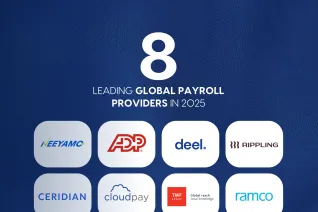Navigating the GDPR Maze: Key Challenges and Future Implications for Data Protection

The General Data Protection Regulation (GDPR), enacted in 2018, has significantly impacted how organizations handle personal data. A recent PwC report revealed a stark reality: the cost of GDPR compliance is substantial. A staggering 88% of organizations surveyed spent over $1 million on compliance efforts, while 40% reported spending upwards of $10 million.
Since its enactment, GDPR has revolutionized data privacy by creating a unified framework for collecting, processing, storing, and transferring personal data. Its primary goals include establishing and protecting individual privacy rights, harmonizing privacy laws across the EU, and addressing the technological transformations of the past decades. Beyond compliance, GDPR fosters trust between organizations and their customers, making it a cornerstone of ethical data practices.
What are the Challenges under GDPR?
Despite its benefits, GDPR presents organizations with significant challenges:
- Administrative Burden: Smaller businesses often struggle to appoint Data Protection Officers (DPOs) and assess compliance needs.
- Vague Guidelines: Ambiguity in handling employee data can lead to inconsistent practices.
- Data Transfer Restrictions: Transferring data outside the EU requires stringent safeguards, increasing operational complexity and costs.
- Escalating Costs: Continuous investment in educating employees and implementing robust data protection measures can strain resources.
- Enforcement Inconsistency: Variations in interpretation across jurisdictions create an uneven playing field for businesses.
ALSO READ: Changing gear with GDPR for Global Payroll Operations
GDPR and AI
As organizations increasingly rely on AI to process personal data, compliance with GDPR becomes more complex. Challenges include:
- Data Minimization: AI models often require large datasets, making collecting only data that is strictly necessary difficult.
- Cross-Border Data Transfers: AI systems operating across borders must adhere to strict GDPR controls for international data movement.
- Automated Decision-Making: GDPR restricts profiling and decisions made without human oversight, which is common in AI applications.
With the EU's Artificial Intelligence Act set to take effect in 2025, businesses must align their AI strategies with GDPR principles to avoid compliance risks. A visual flowchart could illustrate the overlap between AI operations and GDPR obligations.
ALSO READ: From GDPR to CCPA: Navigating the Global Data Privacy Regulations
Solutions and Compliance Strategies
Organizations can navigate GDPR complexities by adopting strategic solutions that ensure compliance and foster operational efficiency:
- Data Protection by Design: Embed privacy measures into systems and processes from the outset. Conduct Data Protection Impact Assessments (DPIAs) to identify risks early.
- Secure Backup and Recovery:
- Encrypt data during storage and transfer to prevent unauthorized access.
- Implement access controls, such as Role-Based Access Control (RBAC) and Multi-Factor Authentication (MFA).
- Regularly test data recovery processes to ensure integrity and resilience.
- Vendor Management: Ensure third-party partners comply with GDPR standards by setting clear contractual obligations and conducting regular audits.
- Transparency and Accountability: Draft clear privacy notices and maintain records of processing activities to demonstrate compliance and foster user trust.
- Streamlined Data Minimization: Collect and retain only essential data, aligning with GDPR's data minimization and storage limitation principles.
GDPR and Data Protection
In terms of data backup and disaster recovery, organizations must implement secure backup processes to safeguard personal data and ensure GDPR compliance. This includes deploying Data protection and disaster recovery solutions that include the following features:
- Encryption of backup data in the storage repository (at rest) and when transferred (in transit). Choose solutions that allow you to implement strong encryption standards to make backup data unreadable to unauthorized parties, even in the event of a security breach.
- Access controls and authentication. Configure role-based access control (RBAC) to limit access to personal data and multi-factor authentication (MFA) to enhance security before granting access.
- Data minimization and storage limitation. One of the core principles of the General Data Protection Regulation is the limitation of storage, which directly impacts backup retention policies. Ensure that backup solutions offer enough flexibility to create different schedules and retention policies for different data tiers.
- Location of backup data in cloud storage. Know where the backup data is stored and choose regions based on the type of personal data processed.
- Regular backup data integrity checks. Maintain regular backups to ensure personal data integrity and Implement measures to test recoveries.
- Vendor and third-party management/compliance. Ensure that third-party storage and other platforms integrated with your backup solution offer the right range of features to ensure you control how and where the data is stored.
DOWNLOAD NOW: Payroll Compliance in the European Union: Understanding GDPR and Other Regulations
What are the future Opportunities for Data Protection?
- Increased use of AI and Machine Learning will undoubtedly play an increasingly significant role in enhancing data security. These technologies are helping identify patterns, anomalies, and potential threats in real time, enabling quicker responses to security breaches.
- Zero Trust Architecture (ZTA) will become more prevalent and ubiquitous. ZTA assumes that threats could be both external and internal, and thus, no entity, whether inside or outside the network perimeter, should be trusted by default. This approach emphasizes continuous authentication and authorization.
- Quantum-safe cryptography utilizes algorithms resistant to quantum attacks, which traditional cryptographic methods are at risk and can’t handle and will therefore become more critical to safeguard sensitive data.
- Biometric authentication methods such as fingerprint scanning, facial recognition, and iris scanning are on the cards to become more widespread as they offer more secure alternatives to traditional password-based systems.
- Privacy-preserving technologies such as homomorphic encryption, federated learning, and differential privacy, which allow for the analysis and processing of data without compromising individual privacy, are also gaining increasing importance.
A Eurostat study highlights that, as of 2023, 8% of EU enterprises with 10 or more employees used AI to enhance business operations. These advancements, combined with GDPR’s principles, position organizations to build a privacy-conscious future.
The GDPR, a cornerstone of data protection, continues to evolve in response to emerging technologies and societal needs. The upcoming AI Act further underscores the importance of robust data protection frameworks. GDPR compliance is not merely a regulatory necessity but a strategic opportunity. By embracing innovation, fostering transparency, and prioritizing data ethics, organizations can navigate GDPR's complexities to build trust, enhance customer relationships, and gain a competitive edge.
Don’t wait for the next data breach to make your move. Looking to navigate the complex world of data privacy? Neeyamo offers expert compliance solutions. Contact irene.jones@neeyamo.com to learn more.
Latest Resources
Stay informed with latest updates
If you're curious and have a thirst for knowledge pertaining to the HR, payroll, and EOR universe, don't miss out on subscribing to our resources.















